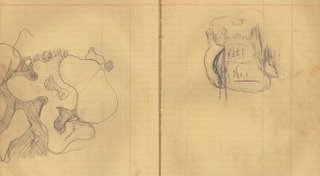The Dead Architect Societies

In principle I’m a big supporter of the idea of promoting the life and works of great architects. It’s good for the game, it’s very good for historical preservation, and it helps clubs avoid foolish renovation schemes when a course is already quite good. If there were no politics or personal agendas involved Dead Architect Societies would be excellent. The only problem is many of the Societies are run or handled by people who put themselves before the society’s best interest.
Let’s take the Donald Ross Society, the granddaddy of them all. On the good side they have helped with the identification and authentication of many of his courses. They, or people involved, have help develop an accurate listing of his projects which alone is very admirable and important. They have helped to save some of his architecture and have got themselves actively involved with trying to prevent the loss of some of his projects. In general they have provided a great model for other societies to emulate. In general they are very good.
The darker side of this particular society is there heavy handed nature as an organization. The society takes many calls about there courses and about who should work on them. I have no issue with them making recommendations, but they almost always provide same list of favorites for all restoration work and quite often have been known to recommend an individual architect. While most of those architects are excellent, the society should not be promoting individual architects whom they do – it’s simply not fair to the others who have done great work too. Another practice that has recently immerged is their recent insistence in actively participating in the restoration process as an “ongoing” advisor. Why? Shouldn’t an architect with restoration experience, the photos and drawings be capable of doing the work? They do this more so when they did not recommend the architect, but were contacted by the course for some assistance. Regardless, this is all about power and control isn’t it. It gets worse with some of the members taking on work as the actual architect (they always use advisor – but what’s the difference), which is fine except that would also be using their position for personal gain – wouldn’t it? I have no issues with them becoming architects, just resign from the board. Where this gets to its worst is when one of the board members actively sought to be the club’s consultant at one of our projects while we were the consulting architect – something that I thought was very unethical on many different levels. Even the club was quite taken back by the gall of the member. I’m not against collaboration, and I have sought outside help when I’m taking on a new architect to restore. In fact I’m doing that right now, but that was simply an abuse of power. I think the Donald Ross Society is important, they need to clean up the problems or lose credibility.
A Stanley sketch from the collection in Guelph Library
I am not a member of the Stanley Thompson Society which probably comes as a surprise to many. My issue with them has nothing to do with transgression like those above – although I think the architects sitting on the board do have the same conflicts of interest. I like many of them a great deal, but I can’t get by two issues. One is the unwillingness of the society to remove any course that is not actually designed by Stanley Thompson course in order to get a truly accurate list on his life’s work. This above all is my primary interest in the Society. The other issue I have is with one of the founders and the difficulties I have had dealing with him. When someone has buried you publicly, it is hard to have any respect or willingness to work with them. The problem is politics and personalities.

1 comment:
Your website has a useful information for beginners like me.
»
Post a Comment